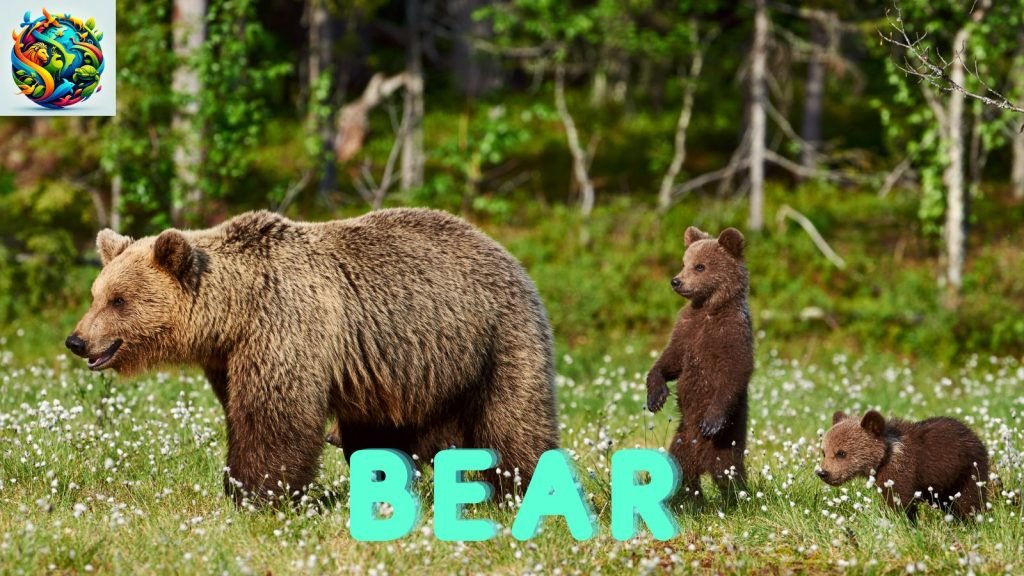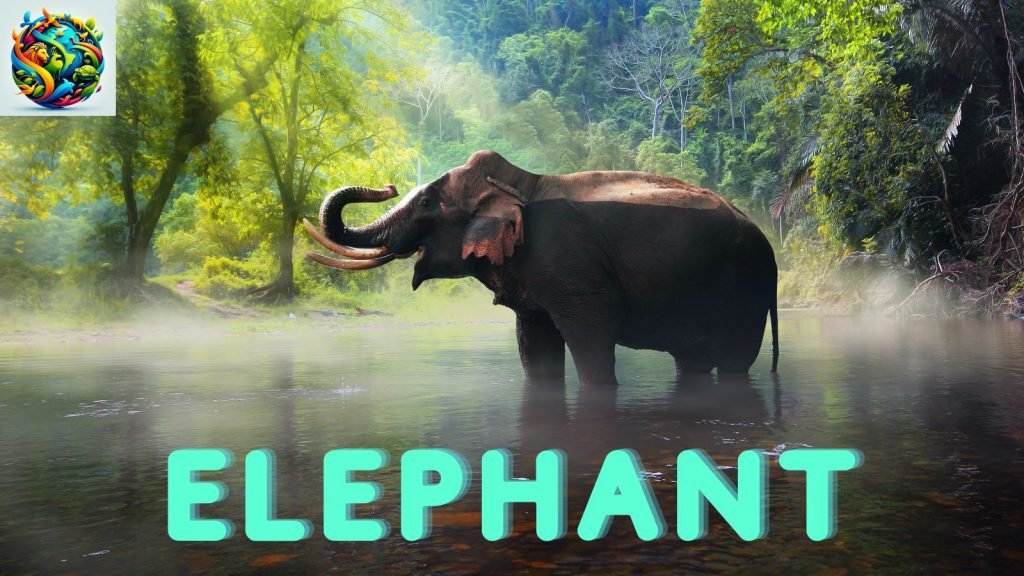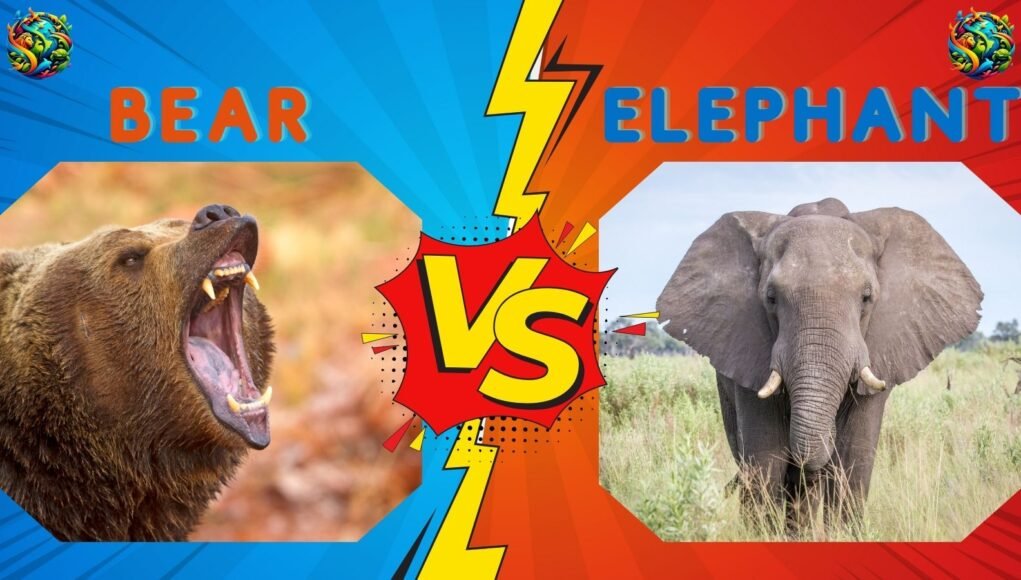Bear vs Elephant: A Colossal Battle of Strength, Size, and Survival
The bear vs elephant matchup is a fascinating clash between two of the largest and most powerful animals in the wild. On one side, we have the bear, a versatile and intelligent predator known for its strength, claws, and adaptability. On the other side, we have the elephant, the largest land animal on Earth, renowned for its immense size, strength, and intelligence. This battle raises intriguing questions: Would the bear’s predatory instincts and weaponry give it the upper hand? Or would the elephant’s sheer size, strength, and defensive tactics allow it to hold its own? Let’s dive into this epic showdown and analyze the strengths and weaknesses of each contender.
Bears are apex predators with powerful forelimbs, sharp claws, and a strong bite force—reaching up to 1,200 PSI in grizzlies. Their agility and intelligence make them effective hunters, capable of taking down large prey. Unlike most carnivores, bears also have remarkable endurance, allowing them to sustain fights for extended periods. While they are significantly smaller than elephants, their ability to use speed, brute force, and claws could make them a dangerous opponent.
Elephants, however, hold a distinct advantage in sheer size and strength. Weighing up to 14,000 lbs, their thick skin, powerful tusks, and immense trunk strength make them nearly invulnerable to most attacks. Elephants are also highly intelligent and capable of strategic thinking, using their strength to ward off even the most fearsome predators. In a head-on battle, an elephant’s bulk alone could be enough to overpower a bear, making this an intriguing matchup of power, skill, and survival instincts.
Basic Overview of the Two Competitors

The Bear
Bears are large, powerful mammals known for their strength, intelligence, and adaptability.
- Scientific Name: Ursus spp. (e.g., Brown Bear: Ursus arctos)
- Size: Bears vary in size depending on the species, but the largest, such as the Kodiak bear, can weigh between 330 and 1,500 pounds (150–680 kg) and stand 5 to 10 feet tall when upright.
- Habitat: Bears are found in forests, mountains, tundras, and coastal areas across North America, Europe, and Asia.
- Diet: Bears are omnivorous, feeding on berries, fish, small mammals, and occasionally large prey like deer or moose.
- Social Behavior: Bears are mostly solitary animals, except during mating season or when raising cubs.
- Speed: Bears can run at speeds of up to 35 miles per hour (56 km/h) in short bursts.
- Bite Force: Bears have a bite force of approximately 1,200 psi (Brown Bear).
- Defensive Traits: Bears have thick fur, a layer of fat, and powerful forelimbs with sharp claws for defense and attack.
The Elephant

The elephant is the largest land animal on Earth, known for its immense size, strength, and intelligence.
- Scientific Name: Loxodonta africana (African Elephant), Elephas maximus (Asian Elephant)
- Size: Elephants weigh between 5,000 and 14,000 pounds (2,268–6,350 kg) and stand 8 to 13 feet tall at the shoulder.
- Habitat: Elephants are found in savannas, forests, and deserts across Africa and Asia.
- Diet: Elephants are herbivorous, feeding on grasses, leaves, bark, and fruits.
- Social Behavior: Elephants live in herds, which are led by a matriarch.
- Speed: Elephants can run at speeds of up to 25 miles per hour (40 km/h) in short bursts.
- Bite Force: Elephants have a bite force of approximately 2,000 psi, which is one of the strongest among mammals.
- Defensive Traits: Elephants have thick skin, powerful tusks, and a trunk for defense and attack. They are highly intelligent and use their size and strength to defend themselves.
Key Comparisons: Bear vs Elephant
1. Size & Strength
Elephants are significantly larger and heavier than bears, with some individuals weighing up to 14,000 pounds. However, bears are more agile and have powerful forelimbs for grappling.
Winner: Elephant (in size), Bear (in agility and grappling ability)
2. Speed & Agility
Bears are faster and more agile on land, capable of running at speeds of up to 35 miles per hour. Elephants, while slower on land, are strong swimmers and can move quickly in water.
Winner: Bear (on land), Elephant (in water)
3. Intelligence & Strategy
Both animals are highly intelligent and use problem-solving skills and strategic thinking to hunt and defend themselves. However, elephants are known for their complex social structures and ability to work together in herds.
Winner: Elephant
4. Offensive & Defensive Weaponry
Bears have sharp claws, powerful jaws, and a bite force of 1,200 psi, which they use to deliver fatal bites and slashes. Elephants, on the other hand, have a stronger bite force of 2,000 psi and sharp tusks that they use to crush and gore opponents.
Winner: Elephant
5. Fighting Style
Bears rely on their strength, claws, and intelligence to overpower opponents. They can stand on their hind legs to intimidate and strike with their forelimbs. Elephants use their size, powerful tusks, and trunk to defend themselves, often delivering devastating charges or using their tusks to gore opponents.
Winner: Elephant
Bear vs Elephant Smell Comparison
Bear’s Sense of Smell
- One of the strongest in the animal kingdom—up to 7 times stronger than a bloodhound’s.
- Can detect food, prey, or danger from miles away.
- Used primarily for hunting and survival.
Elephant’s Sense of Smell
- Considered to have the most olfactory receptors of any land animal.
- Can detect water sources from miles away.
- Uses its trunk as a tool for smelling, touching, and communicating.
Bear Vs Elephant Reddit
- Many Reddit discussions debate whether bears or elephants have the better sense of smell.
- Some argue elephants have more receptors, but bears excel at long-distance tracking.
- Wildlife enthusiasts often share real-world observations and scientific studies to support their opinions.
Fight Scenarios: Bear vs Elephant
Scenario 1: One-on-One Battle on Land
In a one-on-one battle on land, the bear would use its speed and agility to try to outmaneuver the elephant. It would attempt to deliver powerful blows with its forelimbs and claws, targeting the elephant’s neck or flanks. The elephant, in turn, would use its powerful tusks and trunk to strike back. However, the elephant’s size and strength would likely give it the upper hand, allowing it to overpower the bear.
Winner: Elephant
Scenario 2: One-on-One Battle in Water
In water, the elephant has a clear advantage. Elephants are highly adapted to aquatic environments and are incredibly strong swimmers. The bear, while a capable swimmer, would struggle to match the elephant’s strength and agility in water. The elephant would likely ambush the bear, using its powerful tusks and trunk to quickly overpower it.
Winner: Elephant
Scenario 3: Bear vs Elephant Herd
In a scenario where a bear faces a herd of elephants, the outcome would be more balanced. Elephants are social animals and may cooperate when defending themselves. While the bear could take down a few elephants, it would eventually be overwhelmed by their numbers and powerful tusks.
Winner: Elephant Herd
Final Verdict: Bear Vs Elephant Who Would Win?
After analyzing every aspect of the bear vs elephant battle, here’s the final breakdown:
| Category | Winner |
|---|---|
| Bear vs Elephant Size & Strength | Elephant |
| Bear vs ElephantSpeed & Agility | Bear (on land), Elephant (in water) |
| Intelligence & Strategy of Bear vs Elephant | Elephant |
| Bite Force | Elephant |
| Weapons (Claws, Strength) | Bear (claws), Elephant (tusks and trunk) |
| Combat Strategy of Bear vs Elephant | Bear (strength and intelligence), Elephant (powerful charges and tusks) |
| Bear vs Elephant Survival Skills | Bear (versatility), Elephant (size and strength) |
Ultimate Winner: Elephant in One-on-One Combat, Elephant Herd in Group Combat
- In a one-on-one battle, the elephant wins 90% of the time due to its size, strength, and powerful tusks.
- In water, the elephant wins 100% of the time due to its aquatic dominance.
- In a herd scenario, elephants could overwhelm the bear with their numbers and powerful tusks.
Conclusion
The elephant’s size, strength, and powerful tusks make it a dominant force in one-on-one combat. However, the bear’s agility, intelligence, and versatility give it a fighting chance, especially on land. While the elephant is likely to dominate in most encounters, the bear’s unique adaptations and strategic thinking make it a formidable opponent. This matchup highlights the fascinating dynamics of predator-prey interactions and the importance of both individual strength and environmental adaptation in the animal kingdom. Whether it’s the elephant’s raw power or the bear’s calculated precision, this battle reminds us of the incredible diversity of nature’s most powerful creatures.








This site is known as a stroll-through for the entire data you wished about this and didn’t know who to ask. Glimpse here, and also you’ll positively uncover it.